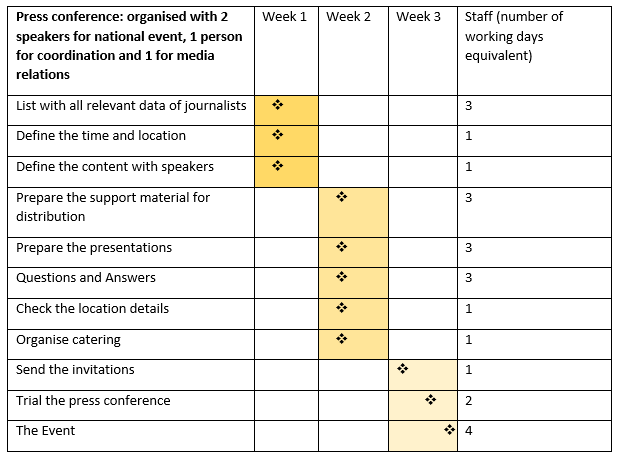Communication Planning
Example of Content for a Communication Plan
The development of a comprehensive communication strategy and plan is most effective when it adheres to proven principles and is designed to proactively address key stakeholders and their concerns. The IAEA General Safety Guide on Communication and Consultation with Interested Parties by the Regulatory Body highlights the need for establishing a communication plan for effective and efficient implementation of such a process.
To achieve this, it is important to develop relevant messages for communicating with key stakeholders, identifying various concerns and motivations. This includes approaching different groups of interested parties in different ways, using different channels and tools. Additionally, evaluation of the success or results of these approaches is an essential part of the planning process.
Communication planning represents the dedication of an organization to transparent and ongoing relationships with stakeholders. It defines the ways and means of communication, targeted audiences, and attitudes or behaviours outreach should impact.
The steps for a good communication plan would include:
- Knowledge of initial conditions of the project or activity, the social climate, legal framework, etc.
- Identification of the purpose and goals of the project
- Stakeholder analysis
- Development of key messages
- Selection of communication channels
- Establishment of partnerships and alliances
- Preparation and implementation of the plan
- Evaluation of the plan
- Modification of the plan according to feedback and introduction of any mid-course corrections.
The table of contents for the communication plan could have the following structure:
- Introduction (scope, objective, topic, description of document)
- Background information (history, initial and boundary conditions, broader time steps in development of the project, social climate in the society, etc.)
- Regulatory framework, decision making and the roles of official institutions
- Communication strategy and goals
- Analyses of the situation and identification of stakeholders (profile, importance, intensity, interest, key concerns)
- Messages for communication
- Communication channels and tools for working with stakeholders (activities, materials)
- Establishment of partnerships and alliances
- Plan of activities with time schedules, resources, support activities
- Implementation of the plan
- Procedures for evaluation and improvement
- Plan for modification according to feedback
- Appendices (list of stakeholders (authorities, NGOs, media, politicians), reporting forms, contact details for all those involved)
Press Conference Plan
For the implementation plan, it is important that the required resources (staff, financial and technical needs) are assessed. It is suggested to use the following steps in order to determine the time, budget and staffing requirements:
• List all activities and distribute them on a timeline in the way in which they would need to appear
• Under each activity, outline the steps, in order, that will lead to its completion
• Assign a budget estimate to each step
• Assign an estimate of staffing requirements to each step
• Working backwards from the activity completion point, assign a date for each step in the activity to start
Example of a press conference plan:



